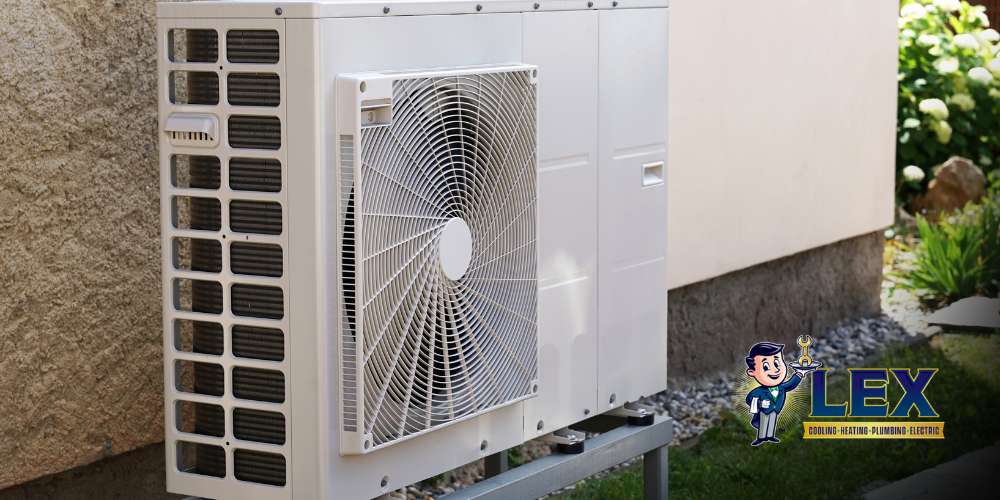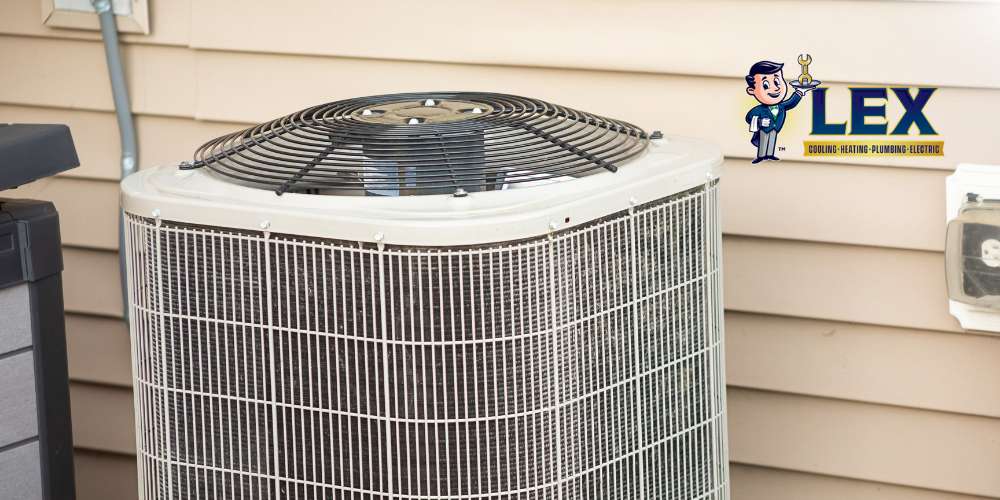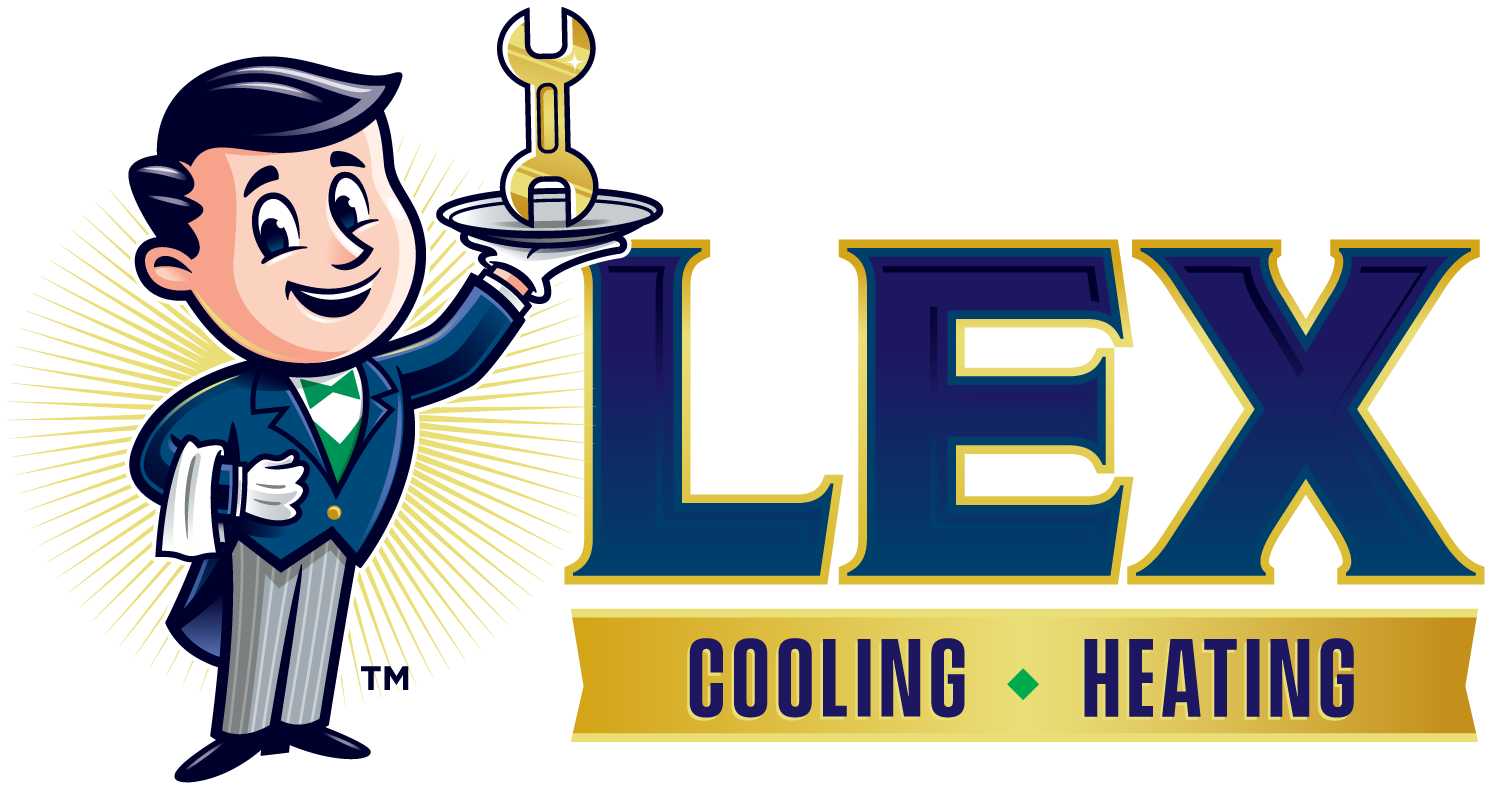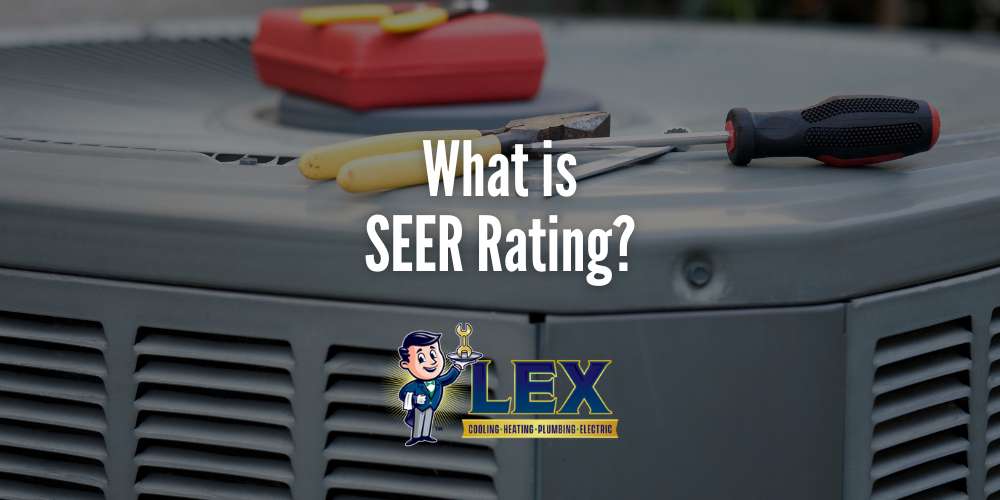If you’ve ever looked into getting an HVAC system you may have a few questions about the acronyms and numbers associated with the various units. One question you may have is, “what is SEER rating?”
SEER stands for Seasonal Energy Efficiency Ratio, one of the most critical benchmarks used to rate the performance of any modern heating and cooling system. A higher SEER rating typically means lower energy bills, which makes it a key factor to consider when replacing or upgrading your HVAC system.
At Lex Air East Texas, our trusted Tyler HVAC technicians take the time to match each home with the right equipment for maximum comfort and cost savings. If you’re looking to install a new system or want to ensure your current unit is operating efficiently, we’re here to help.
Call Lex Air East Texas today at (903) 833-9510 to learn how the right SEER rating can impact your home’s energy efficiency and long-term energy savings.
What Does SEER Mean?
SEER stands for Seasonal Energy Efficiency Ratio, which is a standard used to compare the energy efficiency of air conditioners or heat pumps. SEER reflects how much energy your system uses to deliver its cooling capacity. A higher SEER or SEER2 rating typically indicates lower energy consumption, which can lead to better performance, lower greenhouse gas emissions, and long-term savings.
What Does Seasonal Energy Efficiency Ratio Measure?
The Seasonal Energy Efficiency Ratio measures how efficiently central air conditioners and HVAC systems convert electricity into cooling over an entire cooling season. It compares the system’s total cooling output to the total electric energy input it requires over the course of a typical cooling season.

SEER vs SEER2
The primary distinction between SEER (Seasonal Energy Efficiency Ratio) and SEER2 lies in the testing procedures used to evaluate the unit’s energy efficiency. According to the Air Conditioning, Heating, and Refrigeration Institute, SEER2 introduces updated testing methods that account for external static pressure. This provides a more accurate representation of real-world operating conditions.
This change particularly affects split-system air conditioners and systems equipped with variable-speed compressors. The new testing conditions for SEER2 better simulate the resistance these systems encounter during actual operation. Although SEER2 offers a more realistic metric, the HVAC industry continues to reference higher SEER units when discussing efficiency benchmarks.
Is SEER2 Better Than SEER?
SEER2 rating isn’t necessarily better than SEER, but it does provide a more accurate picture of how air conditioners and heat pumps perform during a typical annual cooling season. SEER2 uses updated testing procedures that reflect real-world conditions, helping to improve energy efficiency standards across the industry.
While higher SEER units typically lead to lower monthly energy bills, SEER2 gives homeowners a clearer understanding of energy costs. Both ratings serve a purpose, but SEER2 helps set a new benchmark for evaluating and comparing system performance more realistically.
At Lex Air East Texas, we help you compare SEER and SEER2 ratings so you can choose the right system for your home and get the best performance for your budget.
How SEER Rating Is Calculated
A SEER rating is calculated by dividing the total cooling output of an air conditioning system over a typical cooling season by the total energy consumption during that same period. This calculation considers varying outdoor temperatures ranging from mild spring days to peak summer heat, in order to reflect real-life usage.
The goal is to estimate how efficiently the system delivers consistent cooling throughout the season. The updated SEER2 rating uses similar calculations but applies more rigorous testing to simulate external conditions better, offering a clearer view of expected performance in everyday scenarios.
Does Higher SEER Mean Lower Energy Costs?
Generally, a higher SEER rating or SEER2 rating can lead to lower energy consumption, which may reduce monthly heating and cooling bills. However, it’s important to weigh that against the upfront investment.
Due to the advanced technology and components in newer HVAC equipment, a high SEER AC unit or high-efficiency air conditioner can have significantly higher equipment costs than standard units.
The type of cooling system, home size, and usage habits also play a role in determining how much your system can help you save, in terms of energy costs. While a more efficient air conditioner or heat pump can lower long-term energy costs, you should factor in the initial price tag into your decision.
Minimum SEER Requirements In Texas
As of January 1, 2023, the U.S. Department of Energy (DOE) updated the minimum energy efficiency requirements for residential HVAC systems in Texas. For split-system air conditioners with a cooling output below 45,000 BTU/h, the minimum SEER rating is now 15.0, corresponding to a SEER2 rating of 14.3. Systems with a cooling capacity of 45,000 BTU/h or higher must meet a minimum of 14.5 SEER, which equates to a SEER2 rating of 13.8.
These updated standards aim to promote energy-efficient solutions by ensuring that new air conditioning units consume less electricity while delivering effective cooling. By adhering to these requirements, homeowners can benefit from reduced energy consumption and lower utility bills over the lifespan of their HVAC systems.

What Is a Good SEER Rating?
A “good” SEER rating depends on location, home size, and cooling needs. In Texas, which falls under the Southeast climate region, air conditioning systems work harder due to long, hot summers. For this reason, a higher SEER rating is often recommended to improve air conditioner efficiency, reduce cooling costs, and provide reliable cooling power throughout the season.
A high-efficiency heat pump or unit with a strong SEER2 rating can deliver the same comfort using less energy, making it a practical choice for homeowners focused on long-term savings and dependable performance.
Good SEER Rating For Heat Pump
In Texas, where extended cooling seasons are common, selecting a heat pump system with a SEER rating between 16 and 18 is generally considered adequate for balancing maximum efficiency and energy savings. These systems are designed to use less energy while providing consistent comfort. Opting for a SEER2 rating of 16.2 or higher can enhance the heat pump system’s performance under real-world conditions, reducing utility bills over time.
Good SEER Rating For Air Conditioners
For air conditioning units in Texas, a SEER rating between 16 and 18 is typically recommended to achieve greater energy efficiency and lower cooling costs. While Texas’s minimum required SEER rating is 15, choosing an air conditioner with a higher rating can offer better performance and long-term savings. It’s essential to consider factors such as home size, insulation, and usage patterns when selecting a system, as these can influence the overall efficiency and cost-effectiveness of the unit.
How To Find SEER Rating On AC Unit
To find your HVAC system’s SEER rating, check the yellow EnergyGuide label located on most air conditioners’ outdoor condenser units. This label displays the system’s efficiency rating and helps you compare performance between models.
You can also look up the model number online or contact the manufacturer if the label is missing or unclear. Knowing your SEER rating can help you determine if your system is energy efficient and capable of delivering more consistent cooling throughout the season.
Choosing the Right SEER Rating for Your Home
Choosing the right SEER rating depends on your home’s size, cooling needs, and energy goals. More efficient systems can make a big difference in comfort and cost in Texas, where summers are long and hot.
Higher-rated central air conditioners and heat pumps typically provide better performance and long-term savings. Our Lex Air East Texas technicians are here to help you compare your options, explain the benefits of each SEER2 rating, and recommend a system that fits your budget and lifestyle.
Should I Upgrade My Air Conditioning System?
If your current air conditioner or heat pump is struggling to keep up, constantly needs repairs, provides uneven cooling, or is driving up your energy bills, it may be time to consider a new cooling system. At Lex Air East Texas, our technicians can evaluate your setup and help you decide if an upgrade is the right choice.
We provide reliable AC installation services for existing homes and new HVAC installations in Tyler, TX, for new construction projects. Upgrading to a more efficient system can improve comfort and deliver long-term energy savings.

Find Experienced AC and Furnace Installation in Tyler, TX with Lex Air East Texas
For expert AC and furnace installation in Tyler, turn to Lex Air East Texas. From high-efficiency air conditioners to reliable heat pumps and furnaces, we’ll help you choose the right system for your home.Our team focuses on proper installation and matching your home with the ideal efficiency rating to maximize performance and energy savings. Ready to upgrade your comfort? Call Lex Air East Texas at (903) 833-9510 or contact us online to schedule service with a trusted air conditioning or heating technician in Tyler, TX.

